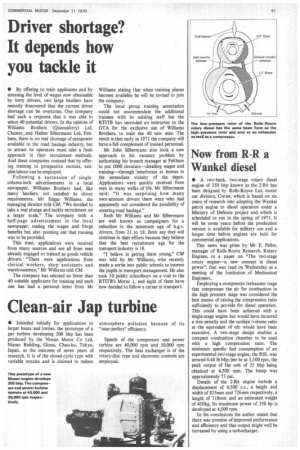Now from R-R a Wankel diesel
Page 53

If you've noticed an error in this article please click here to report it so we can fix it.
• A two-bank, two-stage rotary diesel engine of 350 bhp known as the 2-R6 has been designed by Rolls-Royce Ltd, motor car division, Crewe; which is based on six years of research into adapting the Wankel petrol engine to diesel operation under a Ministry of Defence project and which is scheduled to run in the spring of 1971. It will be some years before the production version is available for military use and a longer time before engines are built for commercial applications.
This news was given by Mr F. Feller, manager of' Rolls-Royce Research, Rotary Engines, in a paper on "The twd-stage rotary engine—a new concept in diesel power", that was read on Wednesday at a meeting of the Institution of Mechanical Engineers.
Employing a compressbr /exhauster stage that compresses the air for combustion in the high pressure stage was considered the best means of raising the compression ratio sufficiently to provide for diesel operation. This could have been achieved with a single-stage engine but would have incurred a size penalty and the surfabe /volume ratio at the equivalent of tdc wbuld have been excessive. A two-stage design enables a compact combustion chamber to be used with a high compression ratio. The minimum specific fuel consumption of an experimental tw6-stage engine, the ME, was around 0.48 lb blip /per hr at 3,500 rpm, the peak output of the unit of 55 bhp being obtained at 4,300 rpm. The bernp was approximately 73 psi.
Details of the 2-R6 engine include a displacement of 6,500 c.c., a height and width of 835nun and 726mm respectively, a length of 718mm and an estimated weight of 450kg. Its maximum power of 350 hp is developed at 4,500 rpm.
In his conclusions the author stated that there was promise of improved performance and efficiency and that output might well be increased by using a turbocharger.






























































































































































